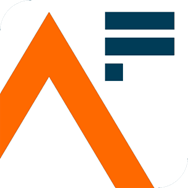My take on equalities data

Richard Laux – Head of the Equality Data and Analysis Division in the Cabinet Office Equality Hub, and Chief Statistician in the Cabinet Office.
Introduction
I spoke recently at the excellent Government Statistical Service Conference 2023 conference titled:
“Statistics and diversity: using statistics to build a more inclusive world”.
This was apt for me. My job is about statistics and their use in helping to build an inclusive world. It is about the statistics we need to tell us about people’s different characteristics. For example:
- their sex
- their sexual orientation
- their ethnic group
- whether they have a disability
I talk about ‘equalities data’ in this blog post. This is my shorthand for data analysed in ways that show inequalities between groups of people or areas. My work is about understanding these inequalities. The aim is that my work can be used to help do something to reduce inequalities and improve people’s lives.
People inside and outside the government put huge value on data about inequalities. There is a big emphasis on this area being “data-driven”. I want to ensure we have the best available evidence in our approach to equalities data so our approach can remain informed by data.
Issues and challenges
There are challenges if we want to continue to improve data about different groups of people.
Think about the historical context
Our work should consider the historical context of inequalities. Regression analysis generally tells us that socio-economic status is more significant than ethnicity in disparities in outcomes, for example. But often we pay little attention to why some ethnic groups are more likely to be in lower socio-economic groups than others.
Another example is sexual orientation data. Over time, a higher proportion of people are reporting being lesbian, gay or bisexual in surveys. It is thought this may be attributed to more people exploring their sexual identity in combination with changing societal attitudes towards different groups and the expression of these today.
Without understanding the historical context of data it’s unlikely that policy interventions will be completely effective.
Improve the quality of your data
My team has produced a set of standards for ethnicity data that producers can use to help improve data quality. Harmonised standards also exist in most areas, but they do not exist in all areas yet. For example, there are no harmonised standards on the topics of sex and gender identity at the moment.
But, whatever characteristic you are looking at, data producers should be:
- using Government Statistical Service (GSS) harmonised standards — you can find out more about the importance of using GSS harmonised standards on the Data in Government blog
- using the correct language when writing about different groups of people — for example the correct language when talking about different ethnic groups
- disaggregating data to small groups and dealing with statistical issues arising from any small sample sizes that result
- using appropriate comparators — you can find out more about using appropriate comparators in my previous blog post
Another data quality issue involves dealing with missing data about people’s characteristics. Equality indicators are not collected systematically. There are gaps in data in areas such as disability, sexual orientation, and gender identity. But there are also areas, such as sex, where more data are collected.
There is a public good in collecting this sort of data because of the analysis it lets us do. But most data collections are voluntary. Some suffer from high non-response to demographic questions. We also need to follow the General Data Protection Regulation (GDPR), which says we must have a need for data to collect it.
There can be tension here between both:
- our role as analysts who want as much data as possible to do as much good as possible
- the need to allow people not to respond to our questions
This is an unresolved, but very important, issue for me. Maybe it needs ONS’ corporate heft to get to the bottom of it. Maybe there’s just no ‘solution’. I’ve raised the issue about the principles about ‘meeting user needs’ and ‘transparency’, and people’s right to privacy with ethnicity data before and I will consider it again with colleagues in the Government Statistical Service soon.
Fill data gaps
There are lots of examples of gaps in the evidence base about equalities. Gaps can arise because we are not collecting the right data, or not collecting any data at all. For example, we do not have comprehensive data about:
- people’s disabilities and impairments
- sexual orientation
- occupations of peoples’ parents — crucial in supporting social mobility analysis
These are important areas I am interested in.
User engagement should inform our understanding of what data we need in the equality area. We should also understand new areas of social and policy interest.
Do more data linkage
The ability to link data sets continues to be important. It can improve data quality. It can fill evidence gaps. But is it only me who feels that it can be difficult to get data linked in practice? In general, our data sharing and linkage culture feels like it’s on the basis of ‘exception’. It would be good to see ONS leading work with other Departments and the GSS to develop a principle closer to “linkage by default”. This is another issue I will be following up.
Think about the economic and the qualitative
We need to think about different analytical approaches. Our work in the equalities space does not currently place much emphasis on economics. There might be more scope to examine our data holdings, or ONS’s data, from a micro-economic perspective. And at the macro-economic scale, we, or ONS, might look at making the economic case for equality.
And we need more emphasis on qualitative analysis. Co-design and qualitative research are essential. We should include people from the populations we are analysing when selecting our research questions, and designing surveys. This can help provide statistics that matter to those populations. The statistics will then be relevant and inclusive.
We need this because quantitative data cannot tell us everything we need to know about inequalities between different groups of people. They can help us understand the scale of the problem. They can also point to the factors associated with the problems. The disability analysts in my team have undertaken qualitative research into the lived experiences of disabled people. The objective of the research has been to gain deep insight into the lived experiences of disabled people, rather than to provide a representative picture. The aims of the research were to:
- inform cross-cutting policy development and policy announcements
- enable policies developed for disabled people to reflect their lived experiences
- help inform the government how to better integrate departmental policies and services
We need this type of qualitative research as we will never get a true sense of what is actually happening in society by only using statistics.
Some people instinctively trust quantitative data more than qualitative data. This may be because they think it is more reliable. But, of course, bigger sample sizes do not mean ‘better data’. And remember that qualitative research has different aims from quantitative research. They are complementary, not alternative approaches.
So, I urge the use of more economic, qualitative, and mixed methods. It is effective to combine approaches.
Working more with other organisations
Who’s going to do this extra analysis? There is scope here to work more regularly with research and academic institutes. There is much external research and data collection available. My team has worked with outside researchers and academics many times. The results and the mutual benefits have been great.
Addressing future challenges
Addressing these challenges is about the right leadership. Strong leadership in partnership with other colleagues – and, of course, dedicated resources – can:
- help develop partnerships with the analytical community outside government.
- bring departments together to provide a coherent economic emphasis on equalities
- help effective coordination of social analysis
- enable us to concentrate on methodological and data quality improvements
The Cabinet Office, including my team in the Equality Hub, have been working closely with ONS to provide leadership in this area. We will continue to do so.
I see great benefit in more partnership working with colleagues in the ONS, including the harmonisation team, and in formalising the way we work together. I’d like to review how ONS and the Equality Hub can work as effectively as possible and make best use of resources we have available.
We will continue to build on the big push on equalities data from Sir Ian Diamond. This has been most visible in the form of the Inclusive Data Taskforce implementation Plan. Departments and other organisations have worked hard towards their actions in the plan. It has brought us a long way forward.
But now we need to ramp our efforts up. We need to build on what we have achieved in the last few years so that we can make greater use of administrative data, especially as it is becoming harder to maintain survey response rates. This means there is a danger of a decline in survey data quality. Using administrative data will ensure the government can continue to take a data-driven approach in work on equalities.
These are some of the questions about leadership and activity about equalities data that I am reflecting on. I would welcome your views:
- What more might the Cabinet Office and ONS do to help secure the future of data about equalities?
- What more might analysts in other Departments do to drive this agenda forward?
- What formal actions might you take — Inclusive Data Taskforce Actions, for example?
- What informal actions might you take — perhaps in the spirit of ‘communities of interest (CoI)’? Would you be interested in participating in a CoI?
- How might departments and organisations outside government work together more?
- How might we make more use of external expertise, research, and data?
Please email richard.laux@cabinetoffice.gov.uk with any thoughts on my six questions.
